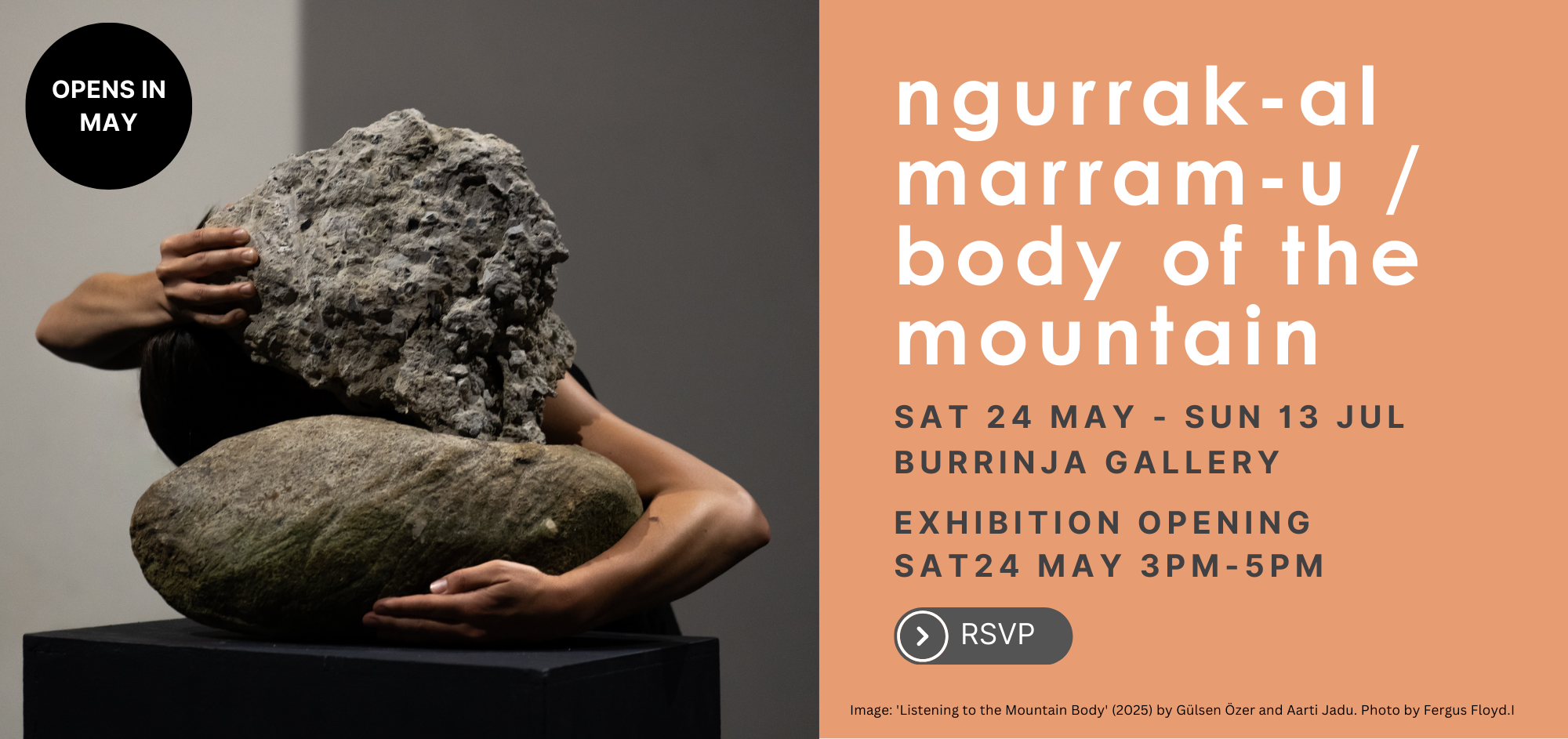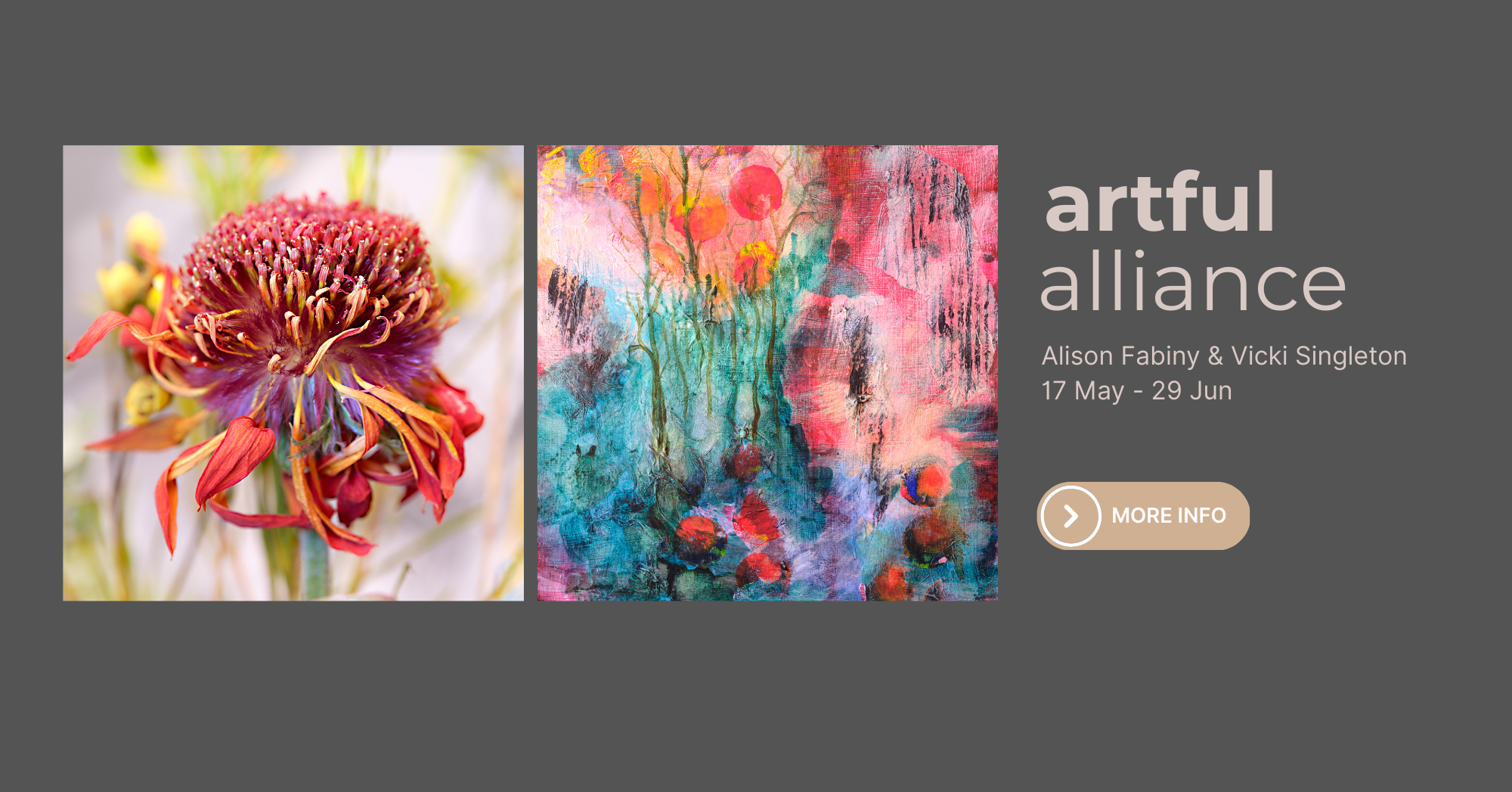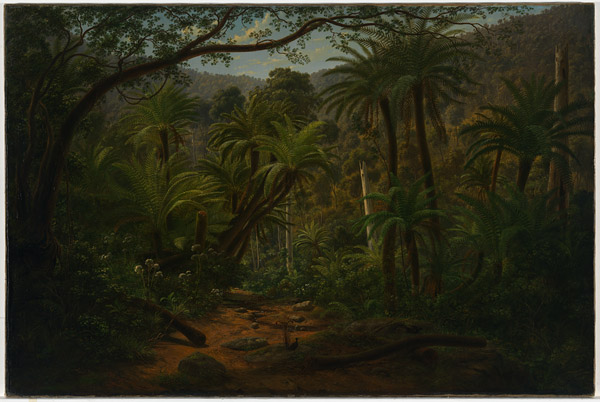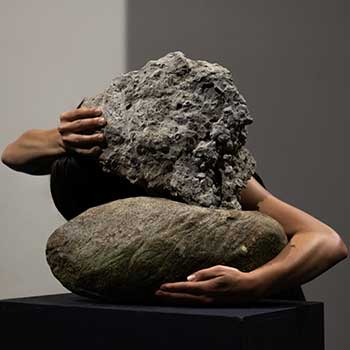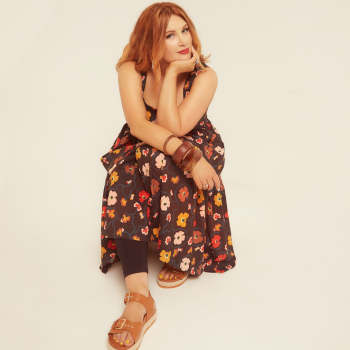The exotic nature of Ferntree Gully.
The Ferntree Gully area, which was the seasonal home to the Wurundjeri people prior to European settlement became a popular destination for recreational visitors from Melbourne who arrived in horse-drawn carts after a long and rough journey on dirt tracks. Was a particular painting of the exotic nature of the gully and the surrounding hills the earliest form of tourism marketing to earlier settlers and the inspiration for the iconic lyrebird image on the Welcome to the Blue Dandenongs sign at Ferntree Gully?
Eugene von Guerard (1811-1901 ), ‘Ferntree Gully in the Dandenong Ranges 1857’, painting, oil on canvas 92.0h x 138.0w, courtesy National Gallery of Australia
The famous 1857 painting by German artist Eugene von Guerard, ‘The Fern Tree Gully’, (pictured above) could be considered one of the earliest painting to promote the area. Von Guerard depicts in fine detail the dense and dark forest among surrounding hills, with tall ferns towering over the iconic lyrebird native of the region seen at the lower centre of the painting. Cut trees and a path leading into the lush bush indicate the arrival of European settlers.
The work toured in the National Gallery of Australia's 25th Anniversary Touring Exhibition: Ocean to Outback - Australian Landscape Painting 1850- 1950. The wonderful online catalogue of this exhibition found here gives further background to the work:
"For German-born artist Eugene von Guérard the Australian landscape represented a real, lived experience and a vehicle for evoking personal and contemplative ideas. His remarkable image of a fern-tree gully in the Dandenong Ranges, some 40 kilometres east of Melbourne, conveys a sense of the landscape as a spiritual sanctuary. In this painting von Guérard showed the landscape as a rejuvenating life force, untainted by human interference. When he first visited the Dandenong Ranges the area was a dense bushland of temperate rainforests and cool fern gullies. We know from sketchbooks held in the collection of the Dixson Galleries, State Library of New South Wales, Sydney, that von Guérard visited the region twice between 1855 and 1857 and again in 1858.
Painted on return to the artist’s Melbourne studio, Ferntree Gully in the Dandenong Ranges is a work that combines von Guérard’s meticulous observation of local plant species with his artistic interest in compositional arrangement and the creation of a ‘mood’ particular to this environment. In this case we are privy to the magical world of a bower – an enclosed gully of natural foliage created by towering tree ferns. A pool of light on the forest floor leads us to two male lyrebirds cast in shadow, one with its characteristic tail feathers raised – a natural mimic of the arch of the fern fronds. The theatrical activities of the lyrebird were one of the early drawcards for tourists to the area, who hoped to witness the singing and dancing of the male bird.
Von Guérard’s painting received much positive acclaim in the Melbourne newspapers and a few years after the work was completed, ‘fern tree gully’, located close to the Fern Tree Gully Hotel, became a popular tourist destination, especially during the summer months. The residents of Melbourne sought the sanctuary of the cool green gullies and active birdlife for their leisure. The work was exhibited at the 1862 International exhibition in London where it was noted as an example of the natural beauty and scenery of the colony."
- taken from the National Gallery of Australia's online exhibition catalougue: Ocean to Outback: Australian Landscape Painting 1850–1950.
A much brighter version of the oil moody painting was produced as a lithograph in 1866, which features two lyrebirds in a courtship dance.
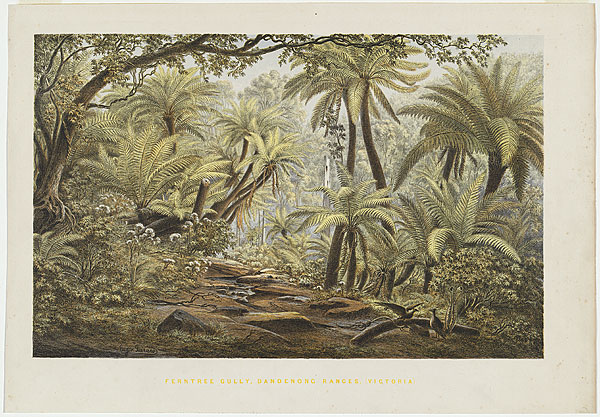
Eugene von Guerard (1811-1901 ), ‘Ferntree Gully, Dandenong Ranges, Victoria. (1866)’, lithograph, printed in colour inks, from multiple stones, 32.7 h x 51.6 w cm, courtesy National Gallery of Australia
In 1882 the gully was set aside for public use and would later become a reserve and national park. The Ferntree Gully township was established in 1840 and throughout decade the township began to grow. Two additional hotels were built, the Royal and the Fern Tree Gully Hotel. Shops were established, churches, and a primary school.
With the extension of the electrical railway line from Ringwood in 1889, the area became much more accessible to visitors and artists alike. Many of Melbourne’s established artists, who later became known as the Heidelberg artists, came to the hills to paint en plain air and explored many of the beautiful vistas across the Dandenong Ranges, among these Arthur Streeton, Tom Roberts, Walter Withers and Charles Conder and the arts continues to be a draw for tourists still.
KenRa Films presents The Blue Dandenongs c.1953, coutesy of the ACMI Collection.



